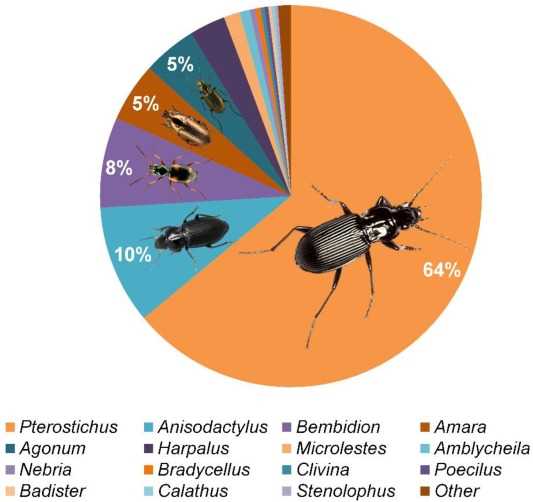- Properties of Vodianica (Shiksha)
- Medicinal Properties:
- Environmental Properties:
- Other Properties:
- Cultivation of Vodianica (Shiksha)
- Climate
- Soil
- Propagation
- Planting
- Watering and Fertilization
- Harvesting
- Uses
- Species and Varieties of Vodianica (Shiksha)
- 1. Solanum vodianicum
- 2. Solanum shiksha
- 3. Solanum glabrum
- 4. Solanum xanthocarpum
- 5. Solanum surattense
- Uses of Vodianica (Shiksha)
- 1. Medicinal Uses
- 2. Culinary Uses
- 3. Spiritual and Cultural Uses
- 4. Beauty and Skincare Uses
- Health Benefits of Vodianica (Shiksha)
- Precautions and Side Effects of Vodianica (Shiksha)
- Question-answer:
- What is vodianica?
- What are the properties of vodianica?
- How is vodianica cultivated?
- Are there different species of vodianica?
- What are the benefits of vodianica?
- How is vodianica used in traditional medicine?
- Are there any side effects of vodianica?
- Video: Arbovirus – Briefly the Family Togaviridae
Vodianica, also known as Shiksha, is a fascinating plant with a rich history and many unique properties. This article will explore the various aspects of Vodianica, including its medicinal and culinary uses, as well as its cultivation and different species.
One of the most intriguing aspects of Vodianica is its medicinal properties. The plant has been used for centuries in traditional medicine for its anti-inflammatory, antioxidant, and antimicrobial effects. It is often consumed as a tea or used topically to treat various ailments, including digestive issues, respiratory problems, and skin conditions.
In addition to its medicinal uses, Vodianica is also highly valued for its culinary properties. The leaves and stems of the plant have a unique flavor that is often described as a combination of spinach, celery, and parsley. It is a popular ingredient in traditional dishes and sauces, adding a distinct taste and aroma.
When it comes to cultivating Vodianica, there are a few key factors to consider. The plant thrives in warm, temperate climates and requires well-drained soil and plenty of sunlight. It can be grown from seeds or cuttings and typically reaches maturity within a few months. Regular pruning is necessary to promote healthy growth and prevent the plant from becoming too woody.
There are several different species of Vodianica, each with its own unique characteristics. Some species are more compact and bushy, making them suitable for small gardens or containers. Others have larger leaves and taller stems, making them a striking addition to any landscape. It is important to research the specific species before planting to ensure that it is well-suited to your climate and growing conditions.
Overall, Vodianica is a versatile and fascinating plant that offers a wide range of benefits. Whether used medicinally or in the kitchen, its unique properties and flavors make it a valuable addition to any garden or pantry. With proper cultivation and care, Vodianica can thrive and provide enjoyment for years to come.
Properties of Vodianica (Shiksha)

Vodianica, also known as Shiksha, is a versatile tree that offers numerous properties and benefits. Let’s explore some of its key properties:
Medicinal Properties:

- Anti-inflammatory: Vodianica exhibits strong anti-inflammatory properties, making it beneficial for reducing inflammation in the body.
- Antioxidant: This tree is rich in antioxidants, which help combat free radicals and protect the body from oxidative stress.
- Antimicrobial: Vodianica has antimicrobial properties that can assist in fighting against various microbial infections.
- Immunomodulatory: It helps in modulating the immune system, enhancing its functionality and response.
- Analgesic: The tree possesses analgesic properties, providing relief from pain and discomfort.
Environmental Properties:
- Soil stabilization: Vodianica has an extensive root system that helps prevent soil erosion and aids in stabilizing the soil.
- Carbon sequestration: The tree is efficient in absorbing carbon dioxide from the atmosphere, playing a vital role in combating climate change.
- Improved air quality: Vodianica contributes to enhancing air quality by filtering pollutants and releasing oxygen.
- Shade and cooling: Its dense foliage provides shade and helps in lowering temperatures, making it suitable for creating pleasant microclimates.
Other Properties:
- Timber: Vodianica timber is highly valued for its durability and is used in construction, furniture making, and various other applications.
- Edible fruits: The tree produces small edible fruits that are consumed by wildlife and can be used in culinary preparations.
- Ornamental: Due to its attractive appearance, the tree is often cultivated and used for landscaping and ornamental purposes.
- Fast-growing: Vodianica is known for its fast growth rate, making it a preferred choice for reforestation and afforestation projects.
These are just a few of the many properties that make Vodianica (Shiksha) a valuable and versatile tree. From its medicinal benefits to its environmental contributions, this tree has much to offer.
Cultivation of Vodianica (Shiksha)

Vodianica, also known as Shiksha, is a unique plant that is native to the Caucasus region. It has been cultivated for centuries for its medicinal and culinary properties. Here are some key points about the cultivation of Vodianica:
Climate
Vodianica thrives in temperate climates with cool summers and mild winters. It prefers areas with an average annual temperature between 12-20°C (54-68°F) and a moderate rainfall of about 800-1000 mm per year.
Soil
The plant requires well-drained soil that is rich in organic matter. It can tolerate a wide range of soil types, including sandy, loamy, and clay soils. The pH of the soil should be slightly acidic to neutral, ideally between 6.0-7.5.
Propagation
Vodianica can be propagated through both seeds and cuttings. Seeds should be sown in early spring or late autumn, while cuttings can be taken in late spring or early summer. It is important to provide a suitable growing medium for the seeds or cuttings to ensure successful propagation.
Planting
When planting Vodianica, it is important to give each plant enough space to grow and spread. The recommended spacing between plants is about 30-40 cm (12-16 inches). The plants should be placed in a sunny location where they can receive at least 6-8 hours of direct sunlight per day.
Watering and Fertilization
Vodianica requires regular watering, especially during dry periods. However, it is important not to overwater, as it can lead to root rot. Fertilization should be done once or twice a year, using a balanced organic fertilizer to promote healthy growth.
Harvesting
The leaves and flowers of Vodianica can be harvested when they are fully grown and mature. This is usually around the mid to late summer. It is important to harvest the plant before it starts to produce seeds to prevent self-seeding and overcrowding.
Uses
Vodianica has several uses, both in traditional medicine and in culinary applications. The plant is known for its diuretic, antiseptic, and anti-inflammatory properties. It is often used to treat urinary tract infections, digestive disorders, and skin conditions. In the kitchen, Vodianica leaves and flowers can be used as a seasoning in soups, salads, and various dishes.
Overall, the cultivation of Vodianica requires attention to detail and proper care to ensure the plant thrives and provides its numerous benefits.
Species and Varieties of Vodianica (Shiksha)
Vodianica, also known as Shiksha, is a medicinal plant that belongs to the Solanaceae family. It has several species and varieties, each with its own distinct properties and uses.
1. Solanum vodianicum
Solanum vodianicum is the most common species of Vodianica. It is a perennial herbaceous plant that grows up to 0.5-1 meter tall. The leaves are green and ovate, with a rough texture. The flowers are small and white, with yellow stamens. This species is mainly used for medicinal purposes due to its various healing properties.
2. Solanum shiksha
Solanum shiksha is another species of Vodianica that is found in certain regions. It has similar characteristics to Solanum vodianicum, but it has larger leaves and flowers. It is also a perennial plant and is used for its medicinal properties.
3. Solanum glabrum
Solanum glabrum is a wild species of Vodianica that is native to certain regions. It has smaller leaves and flowers compared to Solanum vodianicum and Solanum shiksha. It is commonly found in forests and is used for its medicinal properties.
4. Solanum xanthocarpum
Solanum xanthocarpum, also known as Yellow-berried Nightshade, is a species of Vodianica that is widely distributed in India, Pakistan, and other countries. It has yellow berries and is commonly used in traditional medicine for its diuretic and expectorant properties.
5. Solanum surattense
Solanum surattense is another species of Vodianica that is found in certain regions. It has purple flowers and oval-shaped fruits. It is used in traditional medicine for its anti-inflammatory and analgesic properties.
These are just a few of the species and varieties of Vodianica (Shiksha). Each species has its own unique properties and uses, making Vodianica a versatile and valuable medicinal plant.
Uses of Vodianica (Shiksha)
Vodianica (Shiksha) is a versatile medicinal herb that has been used for centuries for its various health benefits. Here are some of the common uses of Vodianica:
1. Medicinal Uses
Vodianica has been traditionally used in Ayurvedic medicine for its healing properties. It is known to possess antiseptic, anti-inflammatory, and analgesic properties. It is commonly used to treat various ailments such as:
- Acne and other skin infections
- Wounds and cuts
- Joint pain and arthritis
- Respiratory disorders
- Indigestion and stomach ulcers
- Menstrual disorders
2. Culinary Uses
Vodianica leaves and flowers are used in cooking to add flavor and aroma to various dishes. They have a slightly bitter and spicy taste, which complements well with savory dishes. Some common culinary uses of Vodianica include:
- Adding fresh or dried Vodianica leaves to soups, stews, and curries
- Using Vodianica flowers as a garnish for salads and desserts
- Infusing Vodianica leaves in hot water to make herbal tea
3. Spiritual and Cultural Uses
Vodianica holds a significant place in various spiritual and cultural practices. It is believed to possess purifying and protective energies. Some of the spiritual and cultural uses of Vodianica include:
- Burning dried Vodianica leaves as incense during prayers and rituals
- Placing Vodianica flowers or leaves in sacred spaces or altars
- Using Vodianica as a natural ingredient in rituals for cleansing and warding off negative energies
4. Beauty and Skincare Uses
The medicinal properties of Vodianica also make it beneficial for skincare and beauty purposes. Some of the beauty uses of Vodianica include:
- Using Vodianica-infused oil or tea as a facial cleanser to treat acne and blemishes
- Adding Vodianica leaves to bathwater for a relaxing and soothing bathing experience
- Applying Vodianica paste to the scalp to promote hair growth and prevent dandruff
With its numerous uses, Vodianica (Shiksha) continues to be an integral part of traditional medicine, culinary arts, spirituality, and beauty practices.
Health Benefits of Vodianica (Shiksha)
Vodianica, also known as Shiksha, is a medicinal herb that offers various health benefits. Here are some of the health benefits associated with the consumption of Vodianica:
- Boosts Immune System: Vodianica is rich in antioxidants and other compounds that help strengthen the immune system, protecting the body against diseases and infections.
- Aids Digestion: Consuming Vodianica can aid in digestion and help relieve digestive issues such as indigestion, bloating, and constipation.
- Relieves Respiratory Problems: Vodianica has mucolytic and expectorant properties that can help in relieving respiratory problems like asthma, bronchitis, and cough.
- Promotes Liver Health: This herb is known for its detoxifying properties and can help protect and cleanse the liver, promoting overall liver health.
- Regulates Blood Sugar Levels: Vodianica may help regulate blood sugar levels, making it beneficial for individuals with diabetes or those at risk of developing the condition.
- Anti-inflammatory Effects: The anti-inflammatory properties of Vodianica can help reduce inflammation in the body, providing relief from conditions such as arthritis and joint pain.
- Improves Cognitive Function: Regular consumption of Vodianica is believed to have a positive impact on brain health, improving memory, focus, and overall cognitive function.
- Rich in Nutrients: Vodianica is a good source of essential vitamins, minerals, and antioxidants, providing the body with the necessary nutrients to maintain optimal health.
It is important to note that while Vodianica offers these potential health benefits, it is best to consult with a healthcare professional before incorporating it into your diet, especially if you have any pre-existing health conditions or are taking medications.
Precautions and Side Effects of Vodianica (Shiksha)
While Vodianica (Shiksha) has various health benefits, it is important to exercise caution and consider the following precautions:
- Consult a Healthcare Professional: Before incorporating Vodianica (Shiksha) into your diet or starting any herbal remedy, it is advisable to consult a healthcare professional or an Ayurvedic practitioner.
- Allergic Reactions: Individuals who are allergic to Vodianica (Shiksha) or any of its components should avoid its use, as it may cause allergic reactions such as skin rashes, itching, or swelling.
- Pregnancy and Breastfeeding: It is recommended to avoid the use of Vodianica (Shiksha) during pregnancy and breastfeeding, as there is limited scientific evidence available to determine its safety during these periods. It is best to consult a healthcare professional for guidance.
- Children: The use of Vodianica (Shiksha) in children should be done under the supervision of a healthcare professional or an Ayurvedic practitioner.
- Dosage: It is essential to follow the recommended dosage instructions provided by a healthcare professional or specified on the product packaging. Taking excessive amounts of Vodianica (Shiksha) may lead to adverse effects.
- Drug Interactions: Vodianica (Shiksha) may interact with certain medications. Therefore, it is crucial to inform your healthcare professional about any medications or supplements you are currently taking before using Vodianica (Shiksha).
While Vodianica (Shiksha) is generally considered safe when used appropriately, it may cause mild side effects in some individuals. These side effects may include:
- Gastrointestinal Discomfort: Some individuals may experience mild gastrointestinal discomfort, such as stomach cramps, nausea, or diarrhea after consuming Vodianica (Shiksha). If these side effects persist or worsen, it is advisable to discontinue its use and consult a healthcare professional.
- Allergic Reactions: As mentioned earlier, allergic reactions may occur in individuals who are sensitive or allergic to Vodianica (Shiksha). If you experience any signs of an allergic reaction, such as difficulty breathing, chest tightness, or swelling of the face, lips, tongue, or throat, seek immediate medical attention.
It is important to note that the information provided here is for informational purposes only and should not replace professional medical advice. Therefore, it is advisable to consult a healthcare professional or an Ayurvedic practitioner before using Vodianica (Shiksha) or any herbal remedy.
Question-answer:
What is vodianica?
Vodianica, also known as shiksha, is a species of medicinal plant native to India. It is known for its various properties and benefits.
What are the properties of vodianica?
Vodianica has several properties that make it a valuable medicinal plant. It is known for its anti-inflammatory, analgesic, and antimicrobial properties. It is also used to treat cough, asthma, and other respiratory conditions.
How is vodianica cultivated?
Vodianica is usually cultivated through seeds. The seeds are sown in well-drained soil with a pH range of 6 to 7. The plant requires a warm and humid climate for proper growth. Regular watering and fertilization are necessary for its cultivation.
Are there different species of vodianica?
Yes, there are different species of vodianica. Some of the common species include Justicia adhatoda, Justicia gendarussa, and Justicia flava. These species have similar medicinal properties and are widely used in traditional medicine.
What are the benefits of vodianica?
Vodianica offers several health benefits. It helps in relieving cough and congestion, treating bronchitis, and reducing inflammation. It also has antimicrobial properties that help in fighting against various infections.
How is vodianica used in traditional medicine?
Vodianica is commonly used in traditional medicine for treating respiratory conditions like asthma, bronchitis, and cough. It is also used as an antipyretic to reduce fever. The leaves and roots of the plant are used for making herbal preparations.
Are there any side effects of vodianica?
While vodianica is generally safe for consumption, excessive intake may cause side effects like nausea, vomiting, and diarrhea. It is recommended to consult a healthcare professional before using vodianica for medicinal purposes.
Video:
Arbovirus – Briefly the Family Togaviridae
https://youtube.com/watch?v=xHxjUAJFwz4







